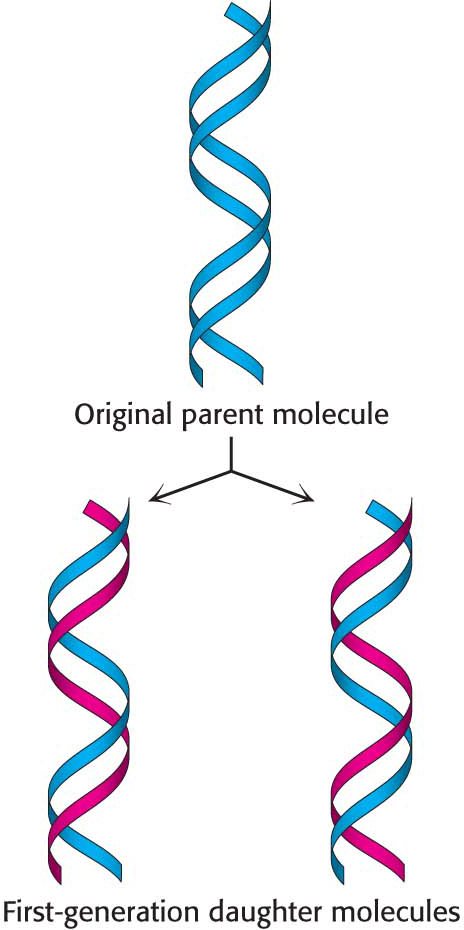By the 1950s, the composition of DNA was well known. Scientists knew that DNA is composed of four bases—A,T,G and C—and that the ratio of adenine (A) to thymine (T) and that of guanine (G) to cytosine (C) are always one. The actual structure of the DNA molecule, however, was a mystery. The elucidation of the structure of DNA is one of the key findings in the history of biological sciences. Perhaps the most exciting aspect of the structure of DNA deduced by James Watson and Francis Crick in 1953 was, as expressed in their words, that the “specific pairing we have postulated immediately suggests a possible copying mechanism for the genetic material.” A double helix separated into two single strands can be replicated because each strand serves as a template on which its complementary strand can be assembled (Figure 33.1). In this chapter, we will examine the structure of DNA and how it is packaged inside the cell.







